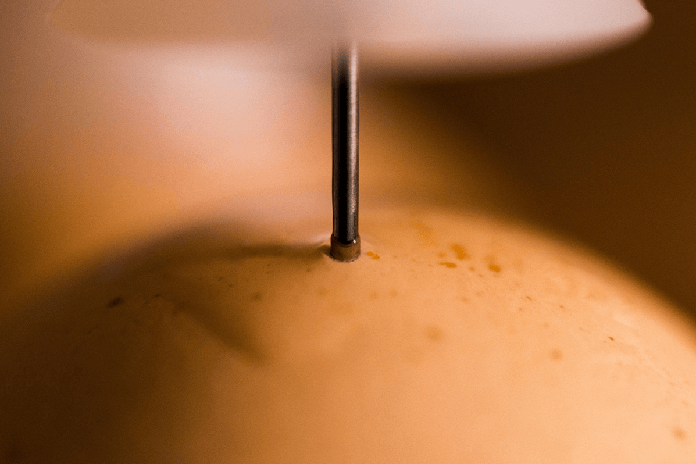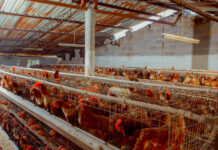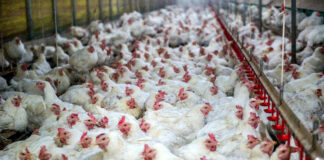
USPOULTRY and the USPOULTRY Foundation announce the completion of a funded research project at the University of Delaware in Newark, Delaware, in which researchers found a new understanding of Infectious Laryngotracheitis – ILT – vaccines.
The research is part of the Association’s comprehensive research program encompassing all phases of poultry and egg production and processing. A brief summary of the completed project is shown below. Project #692: Modified Live Vaccines of Infectious Laryngotracheitis Virus
(Dr. Calvin L. Keeler, Jr., University of Delaware, Newark, Delaware)
In a recently completed research project, Dr. Calvin Keeler at the University of Delaware studied the virus subpopulations in an Infectious Laryngotracheitis (ILT) chicken-embryo-origin (CEO) vaccine to try to understand why these types of vaccines can appear to cause disease in some vaccinated flocks. He found that the non-pathogenic subpopulations located within CEO ILT vaccine spread poorly in chickens, which likely allows the more virulent subpopulations in the vaccine to spread and cause signs of the disease.
Infectious Laryngotracheitis (ILT) is a disease of great concern to the poultry industry. This acute respiratory disease is caused by an avian Alpha Herpesvirus, Infectious Laryngotracheitis virus (ILTV). The poultry industry does not universally embrace the use of live-attenuated chicken-embryo-origin (CEO) vaccines to control this disease, because CEO ILT vaccines can exhibit significant pathogenicity in young birds, with an associated economic cost. The observed pathogenicity of CEO ILT vaccines is inconsistent in the field, leading to a widely held belief that the illness seen in chickens following the use of CEO ILT vaccine results from improper administration and subsequent vaccine spread and back-passage. Vaccine back-passage is the enhancement of vaccine virulence as it spreads bird-to-bird. Therefore, better understanding of the cause of severe vaccine reactions following the use of CEO ILT vaccines is an important industry need. CEO ILT vaccines have been shown to be a mixture of viruses with differing biological properties. In this study, two of these subpopulations of virus from a commercial CEO ILT vaccine, designated UDCEOD2 and UDCEOD3, were found to be non-pathogenic in broiler chickens.
The specific objective of this research was to characterize these ILTV strains exhibiting reduced pathogenicity. The viruses were found to lose viability upon passage in birds, embryonated eggs and in primary liver cell cultures. Two attempts were made to evaluate the dose and route of inoculation for vaccine studies. In both cases the titer of the virus was found to be too low to provide protection. Without the ability to establish immunity, experiments to evaluate the onset and duration of immunity were not possible. These highly attenuated strains of ILTV were passaged 20 times in birds. They did not increase in pathogenicity and demonstrated a decreased ability to replicate. It was not possible to passage these viruses multiple times in either embryonated eggs or in liver cell tissue culture.
The results support the hypothesis that ILTV CEO vaccines do not revert to virulence upon passage in birds. Highly attenuated strains of ILTV appear to have a limited ability to propagate in birds. Therefore, since vaccine stocks have been shown to be composed of a mixture of genetically related viruses exhibiting differences in pathogenicity, “reversion to virulence” may represent a competitive situation where more infectious (virulent) subpopulations in the CEO ILT vaccine outcompete those that are non-pathogenic and less able to replicate when improper vaccine administration allows vaccine spread and back-passage in the field.
A complete report, along with information on other Association research, may be obtained by going to USPOULTRY’s website, www.uspoultry.org.
Source: U.S. Poultry & Egg Association

















